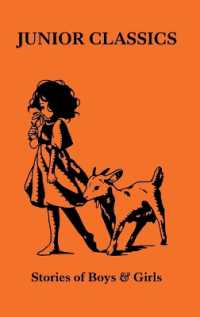基本説明
New in paperback. Hardcover was published in 2001. ‘In this delightful work it is argued persuasively that the Victorians grasped at fairies, indeed made a cult of them, in appalled reaction to the horrid, mechanised modernity they had built ... Bown has triumphantly overcome the handicap of being an academic to produce a warmly readable and diverting survey of this weirdly melancholy cultural phenomenon.’- The Guardian.
Full Description
Although fairies are now banished to the realm of childhood, these diminutive figures were central to the work of many Victorian painters, novelists, poets and even scientists. It would be no exaggeration to say that the Victorians were obsessed with fairies: yet this obsession has hitherto received little scholarly attention. Nicola Bown reminds us of the importance of fairies in Victorian culture. In the figure of the fairy, the Victorians crystallized contemporary anxieties about the effects of industrialization, the remoteness of the past, the value of culture and the way in which science threatened to undermine religion and spirituality. Above all, the fairy symbolized disenchantment with the irresistible forces of progress and modernity. As these forces stripped the world of its wonder, the Victorians consoled themselves by dreaming of a place and a people suffused with the enchantment that was disappearing from their own lives.
Contents
List of illustrations; Acknowledgments; Introduction: small enchantments; 1. Fancies of fairies and spirits and nonsense; 2. Queen Mab among the steam engines; 3. A few fragments of fairyology, shewing its connection with natural history; 4. A broken heart and a pocket full of ashes; Notes; Bibliography; Index.








